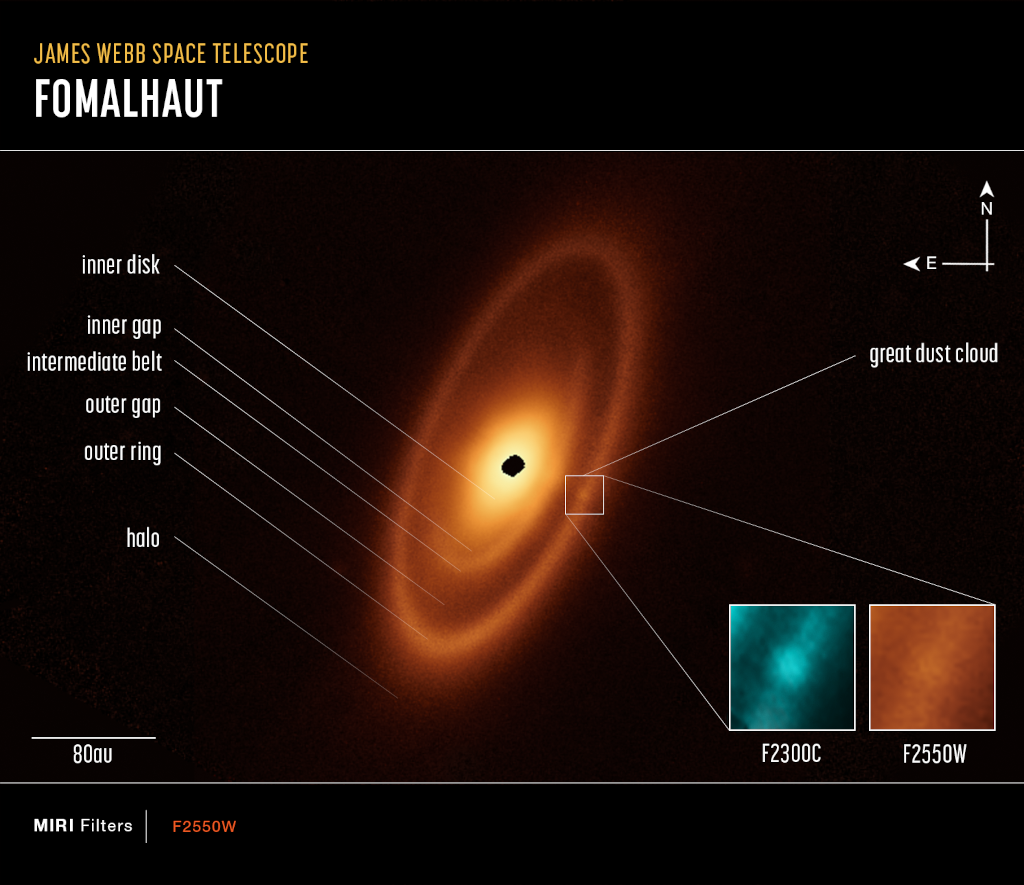안녕하세요, 잡학다식 입니다. 오늘은 과연 나사에서 어떤 방식으로 우주의 형상을 표현해 줄까요?
우선 이미지부터 볼 수 있도록 하겠습니다

해당 사진의 이름은 Fomalhaut's Dusty Debris Disk 인데요 우선 NASA에서 공식적으로 발표한 설명들을 확인해 보겠습니다
Fomalhaut is a bright star, a 25 light-year voyage from planet Earth in the direction of the constellation Piscis Austrinus. Astronomers first noticed Fomalhaut's excess infrared emission in the 1980s. Space and ground-based telescopes have since identified the infrared emission's source as a disk of dusty debris, evidence for a planetary system surrounding the hot, young star. But this sharp infrared image from the James Webb Space Telescope's MIRI camera reveals details of Fomalhaut's debris disk never before seen, including a large dust cloud in the outer ring that is possible evidence for colliding bodies, and an inner dust disk and gap likely shaped and maintained by embedded but unseen planets. An image scale bar in au or astronomical units, the average Earth-Sun distance, appears at the lower left. Fomalhaut's outer circumstellar dust ring lies at about twice the distance of our own Solar System's Kuiper Belt of small icy bodies and debris beyond the orbit of Neptune.
이번에도 광활한 우주 앞에 인간이 얼마나 작은 존재인지 다시 한번 알게 되는것 같습니다
저는 내일도 더 좋은 사진과 함께 돌아오겠습니다, 그럼 행목한 하루 되시길 바랍니다
'과학상식' 카테고리의 다른 글
| NASA 나사의 오늘의 이미지들 (2023-05-13) (0) | 2023.05.14 |
|---|---|
| NASA 나사의 오늘의 이미지들 (2023-05-12) (0) | 2023.05.13 |
| NASA 나사의 오늘의 이미지들 (2023-05-10) (0) | 2023.05.11 |
| NASA 나사의 오늘의 이미지들 (2023-05-09) (0) | 2023.05.10 |
| NASA 나사의 오늘의 이미지들 (2023-05-08) (0) | 2023.05.09 |